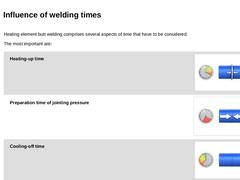
|

|
Heating element butt welding comprises several aspects of time that have to be considered. The most important are: | | (Image: Heating element butt welding – heating-up time)
Heating-up time | | (Image: Heating element butt welding – cooling-off time)
Preparation time of jointing pressure | | (Image: Heating element butt welding – preparation time of jointing pressure)
Cooling-off time |
|
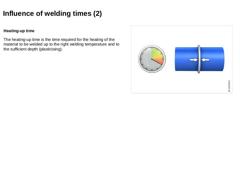
|

|
(Image: Heating element butt welding – heating-up time)
Heating-up time The heating-up time is the time required for the heating of the material to be welded up to the right welding temperature and to the sufficient depth (plasticising). |
|
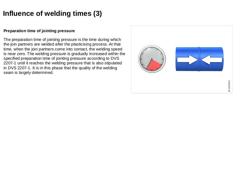
|

|
(Image: Heating element butt welding – cooling-off time)
Preparation time of jointing pressure The preparation time of jointing pressure is the time during which the join partners are welded after the plasticising process. At that time, when the join partners come into contact, the welding speed is near zero. The welding pressure is gradually increased within the specified preparation time of jointing pressure according to DVS 2207-1 until it reaches … |
|

|

|
(Image: Heating element butt welding – preparation time of jointing pressure)
Cooling-off time The cooling-off time is the time during which the plasticised material in the joining layer cools down to such an extent that the welding seem can be loaded at least in certain ranges. The final strength is achieved much later depending on the wall thickness (8 to 24 h after the welding). |
|
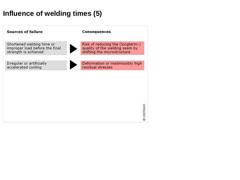
|

(Image: Influence of the welding times – sources of failure and consequences) |

|

|

|

Environmental effects (e.g. moisture, wind, temperature etc.) Preparation of welding seam (rectangular separation of the pipes, removal of the oxide layer etc.) (Image: Factors of influence on the welding quality) |

|

| (Image: Flow properties of the cast during heating element butt welding according to [Ehren04] [Image: S&P GmbH])
Residual welding stresses are inevitably caused by the following factors: - Flow and diversion current during the welding procedure and
- Shrink stresses during the cooling process
| | (Image: Attention!)
Residual welding stresses are considerably increased by non-observance of the right welding parameters or environmental effects. |
|
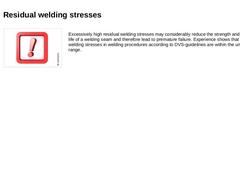
|

| (Image: Attention!)
|
Excessively high residual welding stresses may considerably reduce the strength and service life of a welding seam and therefore lead to premature failure. Experience shows that residual welding stresses in welding procedures according to DVS-guidelines are within the uncritical range. |
|
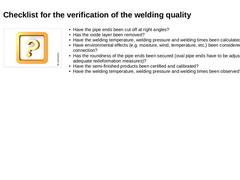
|

|
(Image: Question) |
-
Have the pipe ends been cut off at right angles?
-
Has the oxide layer been removed?
-
Have the welding temperature, welding pressure and welding times been calculated correctly?
-
Have environmental effects (e.g. moisture, wind, temperature, etc.) been considered in this connection?
-
Has the roundness of the pipe ends been secured (oval pipe ends have to be adjusted by adequate redeformation measures)?
-
Have the semi-finished products …
|
|
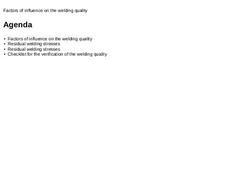
|

|

|

|
Heating element butt welding The joint faces of the pipes to be welded are heated at the heating element under pressure and connected after the removal of the heated element. (Image: Heating element butt welding – heating element - Sketch of principle) |
Electrofusion welding Electrofusion fittings are equipped with integrated resistance wires, which are stressed by electric current during the welding process. (Image: Cross section of an electrofusion … |
|

|

|

|

|
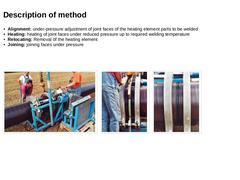
|

-
Alignment: under-pressure adjustment of joint faces of the heating element parts to be welded
-
Heating: heating of joint faces under reduced pressure up to required welding temperature
-
Relocating: Removal of the heating element
-
Joining: joining faces under pressure
|
(Image: Heating element butt welding device) |
(Image: Welding of the HD-PE long pipes into continuous pipes) |
(Image: Welding of the HD-PE long pipes into continuous pipes) |
|
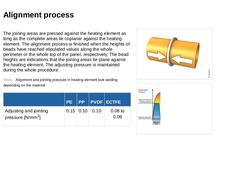
|

The joining areas are pressed against the heating element as long as the complete areas lie coplanar against the heating element. The alignment process is finished when the heights of beads have reached stipulated values along the whole perimeter or the whole top of the panel, respectively. The bead heights are indications that the joining areas lie plane against the heating element. The adjusting pressure is maintained during the whole procedure. |
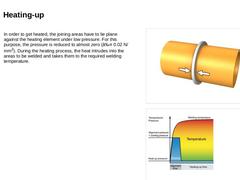
|

|
In order to get heated, the joining areas have to lie plane against the heating element under low pressure. For this purpose, the pressure is reduced to almost zero (≤ 0.02 N/mm2). During the heating process, the heat intrudes into the areas to be welded and takes them to the required welding temperature. | (Image: Heating element butt welding ? adjusting the joining areas)
| | (Image: Temperature sequence and pressure curve in the adjusting and heating-… |
|
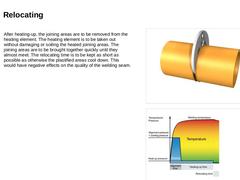
|

|
After heating-up, the joining areas are to be removed from the heating element. The heating element is to be taken out without damaging or soiling the heated joining areas. The joining areas are to be brought together quickly until they almost meet. The relocating time is to be kept as short as possible as otherwise the plastified areas cool down. This would have negative effects on the quality of the welding seam. | (Image: Heating element butt welding - … |
|
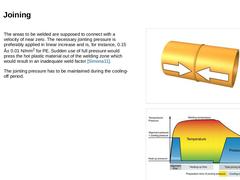
|

|
The areas to be welded are supposed to connect with a velocity of near zero. The necessary jointing pressure is preferably applied in linear increase and is, for instance, 0.15 ± 0.01 N/mm2 for PE. Sudden use of full pressure would press the hot plastic material out of the welding zone which would result in an inadequate weld factor [Simona11]. The jointing pressure has to be maintained during the cooling-off period. |
(Image: Heating element butt … |
|
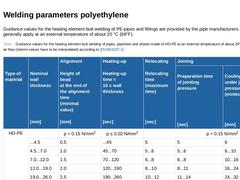
|

Guidance values for the heating element butt welding of PE-pipes and fittings are provided by the pipe manufacturers. They generally apply at an external temperature of about 20 °C (68°F). (Table: Guidance values for the heating element butt welding of pipes, pipelines and sheets made of HD-PE at an external temperature of about 20°C and moderate air flow (interim values have to be interpolated) according to [DVSR2207-1]) |
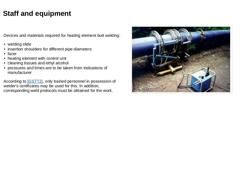
|

|
(Image: Lining with continuous pipes [FI-KMG] - Heating element butt welding) Devices and materials required for heating element butt welding: -
welding slide
-
insertion shoulders for different pipe diameters
-
facer
-
heating element with control unit
-
cleaning tissues and ethyl alcohol
-
pressures and times are to be taken from indications of manufacturer
According to [GSTT2], only trained personnel in possession of welder's certificates may be used … |
|
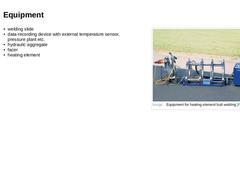
|

-
welding slide
-
data-recording device with external temperature sensor, pressure plant etc.
-
hydraulic aggregate
-
facer
-
heating element
(Image: Equipment for heating element butt welding [FI-Huern]) |
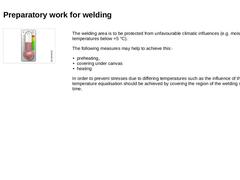
|

The welding area is to be protected from unfavourable climatic influences (e.g. moisture and temperatures below +5 °C). The following measures may help to achieve this:· -
preheating,
-
covering under canvas
-
heating
In order to prevent stresses due to differing temperatures such as the influence of the sun, temperature equalisation should be achieved by covering the region of the welding seams on time. |

|

| (Image: Temperature)
|
Before the welding procedure starts, the temperature of the heating element that is required for welding has to be controlled. This is carried out e.g. by means of a temperature measuring device with a fast display used for surface measurements. The control measurement has to be carried out within the area of the heating element that corresponds with the semi-finished product. In order to create a thermal balance, the heating … |
|
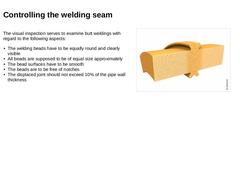
|

The visual inspection serves to examine butt weldings with regard to the following aspects: -
The welding beads have to be equally round and clearly visible
-
All beads are supposed to be of equal size approximately
-
The bead surfaces have to be smooth
-
The beads are to be free of notches
-
The displaced joint should not exceed 10% of the pipe wall thickness
|